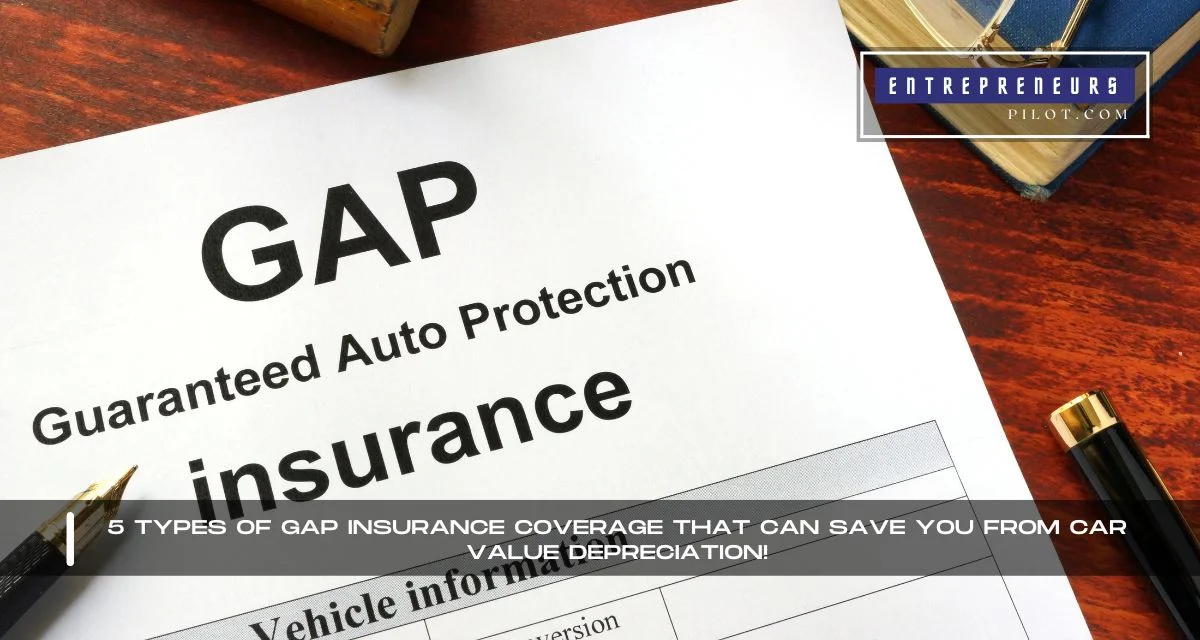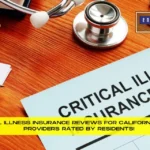Introduction
Ever driven off the lot in your brand-new car, basking in the glory of that new car smell, only to be hit by the harsh reality of depreciation? It’s a well-known fact that new cars lose a significant portion of their value the moment they leave the dealership. This is where understanding the various types of gap insurance coverage comes into play, acting as a financial safety net for your investment. In this blog, we’ll dive into the 5 Types Of Gap Insurance Coverage That Can Save You From Car Value Depreciation, ensuring you’re equipped to protect your wallet and your wheels.
Prepare to navigate through the ins and outs of gap insurance, a crucial tool that bridges the gap between your car’s depreciated value and the amount you owe on it, safeguarding you against unexpected financial pitfalls.
Table of Contents
What is Gap Insurance?
Gap insurance, or Guaranteed Asset Protection insurance, is like a superhero for your car loan or lease. It swoops in to save the day if your vehicle is totaled or stolen, and you owe more on it than its current market value. Considering how quickly new cars depreciate – some models can lose up to 30% of their value within the first year – gap insurance isn’t just smart; it’s a financial lifesaver. Without it, you could be stuck paying off a loan for a car that’s no longer in your garage. Let’s explore the different types of gap insurance coverage that can keep you from falling into this financial chasm.
Type 1: Loan/Lease Payoff Coverage
This is the most common form of gap insurance and a must-have if you’re leasing or have a long-term loan. It covers the difference between what you owe and the car’s actual cash value (ACV) in the event of a total loss. Imagine owing $25,000 on your car when it’s totaled, but the insurance company says it’s only worth $20,000. Loan/Lease Payoff coverage steps in to cover the $5,000 gap, minus your deductible, ensuring you’re not out of pocket.
- For Expert Financial Insights And Guidance, You Can Visit Our Sister Site – ArabsGeek.com Now!
- Curiosity Piqued? Dive Into the Most Captivating Financial Content by Visiting Our Homepage!
- Unlock Exclusive Business Opportunities! 🚀 Connect with Us Now at our Email: [email protected]!
Type 2: New Car Replacement Coverage
While not strictly gap insurance, New Car Replacement Coverage is a close cousin and worth considering. If your brand-new vehicle is totaled, this coverage doesn’t just pay off what you owe; it replaces your car with a new one of the same make and model. It’s an excellent option for those who want to avoid the depreciation hit and ensure they can get back into a new vehicle without additional expense.
Type 3: Used Car Gap Insurance
Used cars depreciate too, albeit at a slower rate than new ones. For buyers of used vehicles, there’s a specific gap insurance designed to protect your investment. This coverage is tailored for the unique financial dynamics of used cars, taking into account their slower depreciation curve and potentially lower loan amounts. It’s a savvy move if you’re purchasing a relatively new used car with a loan.
Type 4: Gap Insurance for Leased Cars
Leasing a car comes with its own set of financial considerations, and gap insurance is often included in your lease agreement. However, it’s crucial to understand the terms and whether the coverage is comprehensive enough for your needs. This type of gap insurance ensures that if your leased vehicle is totaled, you won’t be left covering the cost difference between the lease amount and the car’s ACV.
Type 5: Gap Insurance with Deductible Coverage
Some gap insurance policies go the extra mile by covering your auto insurance deductible in the event of a claim. This means if you’re in an accident and your car is totaled, not only will the gap policy cover the difference between the ACV and what you owe, but it will also cover your deductible, significantly reducing your out-of-pocket expenses.
Conclusion | Types Of Gap Insurance Coverage
Understanding the different types of gap insurance coverage is crucial in today’s rapidly depreciating automotive market. Whether you’re driving off the lot in a shiny new car or opting for a pre-loved vehicle, gap insurance offers a layer of financial protection that can save you from the pitfalls of car value depreciation. By exploring the options and selecting the right coverage for your needs, you can drive with peace of mind, knowing you’re protected from the unexpected. Remember, the road might be unpredictable, but your financial security shouldn’t be. Don’t let depreciation drive you into a corner; consider gap insurance as your financial safety net.
Frequently Asked Questions
01. Is gap insurance worth it for a used car?
Yes, especially if you’re buying a relatively new used car with a loan. The depreciation might be slower, but the financial gap can still be significant in the event of a total loss.
02. Can I purchase gap insurance after I buy my car?
Yes, you can purchase gap insurance after buying your car, although it’s often more cost-effective to do it at the time of purchase. Check with your insurance provider for their specific policies.
03. Does gap insurance cover engine failure or other mechanical issues?
No, gap insurance only comes into play if your car is totaled or stolen. It does not cover mechanical failures or routine maintenance issues.
04. What happens if I cancel my gap insurance policy early?
If you cancel your gap insurance policy early, you may receive a prorated refund for the unused portion of your premium, depending on your policy’s terms.
05. How do I know if I already have gap insurance?
Review your lease agreement or loan documentation, and check with your insurance provider. Gap insurance is sometimes included in lease agreements or can be added as an optional coverage to your existing auto insurance policy.











